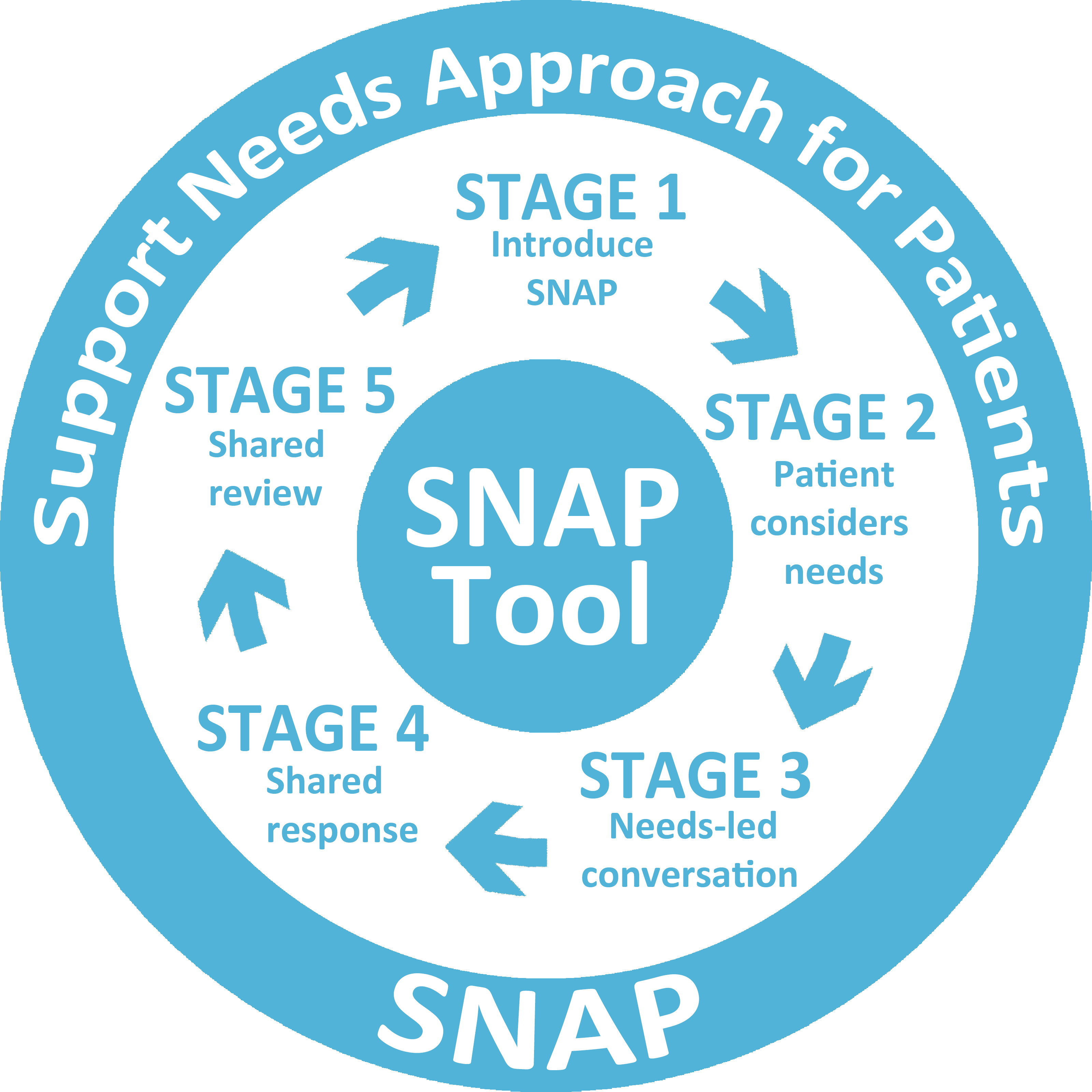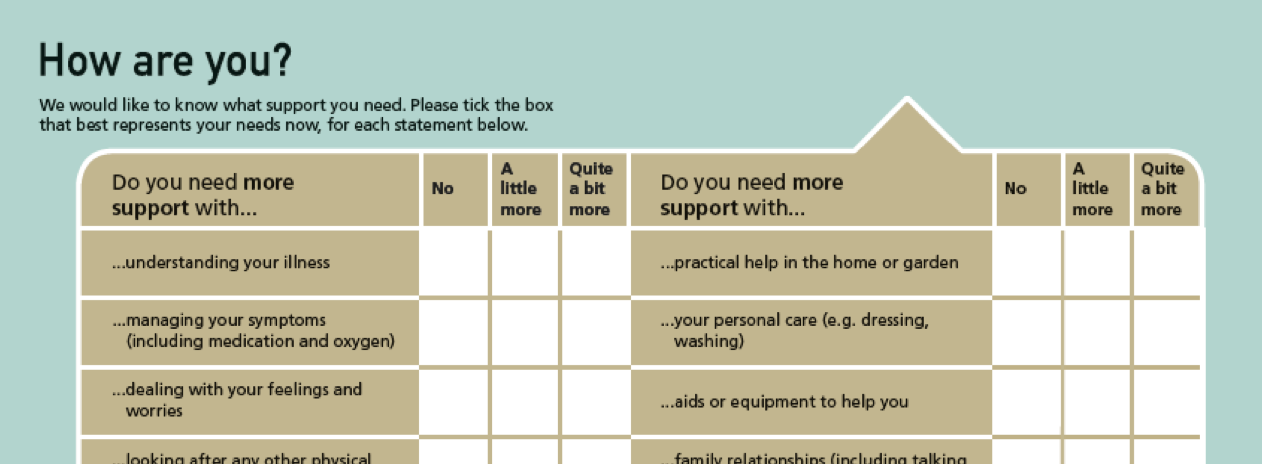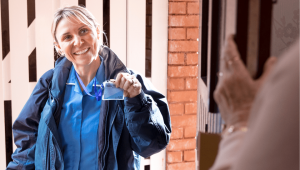The Support Needs Approach for Patients

What is the Support Needs Approach for Patients (SNAP)?
The Support Needs Approach for Patients (SNAP) is a health care intervention which seeks to enable person-centred care for patients with chronic or progressive conditions. SNAP uses an evidence-based validated tool, known as the SNAP Tool, to help patients identify and express their support needs which are then discussed with their health care professional.
The evidence for the SNAP Tool comes from:
- patients with progressive disease
- informal carers (family and friends who help and support patients)
- and health care professionals
The SNAP Tool comprises 15 items (broad areas of support need) in which patients with progressive disease commonly say they require support. The tool is short and simple to use for both patients and health care professionals.
SNAP is more than just the 15-item tool however: the tool underpins the 5-stage SNAP intervention for use in clinical practice. The SNAP Tool can also be used as a standalone tool in research studies seeking to identify areas of unmet support need in patients with chronic or progressive conditions.
Why do we need SNAP?
Patients with progressive conditions have support needs – they also have unmet support needs.
Some patients find it difficult to tell health care professionals about their support needs as…
- they are worried about health care professionals’ time
- they are not sure what it is appropriate or relevant to tell health care professionals about
- and they are very aware that health care professionals have things they need to do, or get on with, during an appointment – and the health care professional tends to be “in the driving seat” of consultations
It’s difficult for health care professionals to meet patients’ support needs if they don’t know what those needs are.
Patients therefore need a tool to help them identify and express their support needs to a health care professional – a tool to help overcome their concerns and to act as a prompt. Such a tool could then help start a needs-led conversation with the health care professional about their unmet support needs.

What are the five stages of SNAP?
SNAP is more than the SNAP Tool. It is more than just the 15 items on the tool itself. SNAP is a 5-stage person-centred intervention which is facilitated by the health care professional but led by the patient. It seeks to enable person-centred care.
Within SNAP the patient is enabled to say what is most important to them, at that moment in time, and what they feel would help support them. It is person-centred in that at every one of the five stages the patient is at the centre of the activity – they are “in the driving seat”.
- SNAP begins when patients are introduced to the SNAP Tool
- Patients then use the SNAP Tool to consider and indicate the areas in which they need more support – by answering the 15 evidence-based questions
- A needs-led conversation then takes place between the patient and the health care professional using the patient-completed tool, which enables the patient to prioritise and express their individual support needs
- Together, the patient and health care professional then agree on what (further) supportive input would be valuable and create a shared action plan
- A shared review of the patient’s support needs is then carried out, by the patient and health care professional, at another point in time
What does the SNAP Tool look like?
The SNAP Tool, which underpins SNAP, uses a simple question and tick answer format to ask patients to show which areas they need more support with. The ‘visibility’ of common areas of support provided by the tool has been reported as helpful for patients. Patients can indicate whether, or not, they need more support in relation to each broad area of support need.
Extract from the SNAP Tool…

The content of the SNAP Tool is evidence-based and has been validated in a population of patients with progressive disease.
You can request an inspection copy of the full SNAP Tool via the link on the “Licensing” page.
Can I use SNAP in my clinical practice?
Yes – but you need a licence.
The SNAP Tool is copyrighted. A licence is required for organisations using the tool:
- a licence is free of charge for health care professionals from non-commercial organisations.
To apply for a licence and/or access an inspection copy of the SNAP tool, go to the “Licensing” page.
To secure a licence to use the SNAP Tool in clinical practice you will first need to complete the short, free to access, online SNAP training. Go to the “Training” page to access the training.
Face-to-face training is also available – see the “Training” page.
Can I use the SNAP Tool in my research?
Yes – but you need a licence.
The SNAP Tool is copyrighted. A licence is required for organisations using the tool:
- a licence is free of charge for researchers from non-commercial organisations.
To apply for a licence and/or access an inspection copy of the SNAP Tool, go to the “Licensing” page.
If your research is only using the SNAP Tool to identify areas of unmet support need in patients and is not being used by a health care professional in their clinical practice, then there is no requirement to complete the online SNAP training (although it can still be accessed and completed if you are interested).
However, if your research study is using the SNAP Tool to identify areas of unmet support need in patients and to address those needs (i.e. where health care professionals deliver the SNAP intervention in clinical practice) then you, and the health care professionals delivering SNAP, will need to complete the short, free to access online SNAP training. Go to the “Training” page to access the training.
Face-to-face training is also available – see the “Training” page.



